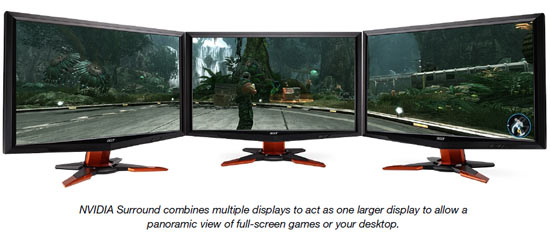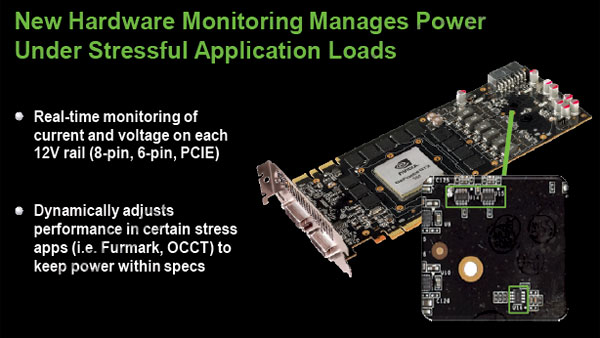Folding for Guru3D - NVIDIA 3D Vision Surround
Folding@Home using the GeForce GPUs
 Folding at home is a project where you can have your GPU or CPU (when the PC is not used) help out solving diseases by folding proteins. Over the past 12 months a lot of progress has been made between the two parties involved. And right now there is a beta folding client available that works with GeForce Series 8, 9 and GTX 200 / 400 / 500 graphics processors. It is CUDA based... meaning that all CUDA ready GPUs can start folding.
Folding at home is a project where you can have your GPU or CPU (when the PC is not used) help out solving diseases by folding proteins. Over the past 12 months a lot of progress has been made between the two parties involved. And right now there is a beta folding client available that works with GeForce Series 8, 9 and GTX 200 / 400 / 500 graphics processors. It is CUDA based... meaning that all CUDA ready GPUs can start folding.
Guru3D team is ranking in the Folding@Home top 70, yes... I'm very proud of our guys crunching these numbers, especially since there are tens of thousands of other teams.
The client is out, if possible please join team Guru3D and let's fold away some nasty stuff. The good thing is, you won't even notice that it's running.
Our Folding@Home info can be found here:
- Team Guru3D Homepage
- Team Guru3D support forums
- GPU2 -> GPU3 Transition Guide For Windows + Link To Linux
Our team number is 69411 and if you decide to purchase a GeForce GTX 200 / 400 / 500 product, guys, promise me you'll use it to fold for us. Of course I recommend all GeForce 8800 / 9800 owners give this a try as well. By making this move my dear friends, there are now 70 million GPUs available to compute the biggest mysteries in diseases and illnesses. Again, let's make Team Guru3D the biggest one available guys, join our team.
NVIDIA 3D Vision Surround
Along with the Series 400 and 500 GPUs also comes a technology called NVIDIA 3D Surround -- which is supported by their latest GeForce Forceware drivers (download here).
3D Vision Surround allows you to play on three 3D displays simultaneously, and span your entire game across all three panels for a very immersive, rocking 3D environment. Of course, an idea carefully borrowed from ATI (Eyefinity) with the addition of the 3D Stereo part that is. Would ATI not have introduced Eyefinity, then NVIDIA would have never tried to integrate this technology. So who doesn't love competition?
First off, you can also use this Surround technology in 2D mode too -- 3D Stereo with goggles is really not a requirement.
3D Vision Surround was officially launched alongside the GeForce GTX 470/480 release. There is however good news for GeForce GTX 260, 275, 280, 285 and 295 owners. 3D Vision Surround will be supported on that series as well, all you'll need is a driver update, two cards and three monitors. Preferably with a 3D Vision kit of course.
So to recap: 3D Vision Surround offers 3D Vision support spanned across three displays, effectively allowing you to run three 3D displays simultaneously.
We mentioned this a paragraph or two ago already, there is a downside alright. SLI will be a requirement as the cards can only cope with 2 DVI outputs. So yes, two cards set up in SLI are a requirement, making gaming on three monitors definitely an expensive thing to accomplish. But granted, it really is a heck of a lot of fun though.

3D Surround Stereo with three monitors
NVIDIA will include software controls for bezel correction allowing you to compensate for monitor bezel gaps. So to recap once more, NVIDIA 3D Surround is a derivative, much like ATI Eyefinity, which will also work with three monitors; surround vision with the 3D goggles is not a requirement, an SLI setup with series 400 / 500 cards however is.
Power Monitoring hardware
ATI already implemented this on the R5000 and newer series, NVIDIA now follows. Two small ICs are embedded on the PCB that monitor temperatures and power load on certain phases of the PCB. A new power monitoring feature as such has been implemented. Dedicated hardware on the PCB monitors current and voltage on each 12v pin leading to the graphics cards.
The driver will monitor the power levels and can dynamically adjust performance, especially with stress software like Furmark & OCCT this should kick in.
We tested the feature deeply and not once did we notice a clock down or anything with Furmark. Also, overclocking wise we were wondering if the feature would kick in and prevent overclocking. As you will notice later on in our review, overclocking was not hindered by this either.
Personally we do not like this feature whatsoever as in certain conditions it could kick in and clock down the graphics card. For extreme overclockers (LN2) we expect a lot of issues though. The NVIDIA board partners can decide for themselves whether or not to implement this on their own custom boards though all reference boards will have this protection.
NVIDIA's latest email on the topic:
Earlier this week we briefed you about a new feature we called Advanced Power Management. The below information is intended to clarify. First, here are the correct facts about our new technology:
We have implemented new power monitoring and power capping features on GTX 580 boards. Similar to our thermal protection mechanisms that protect the GPU and system from excessive heat generation, the new power monitoring and capping features help protect the graphics card and system from issues caused by excessive power draw.
- Dedicated hardware circuitry on the GTX 580 graphics card performs real-time monitoring of current and voltage on each 12V rail (6-pin, 8-pin, and PCI-Express).
- The graphics driver monitors the power levels and will dynamically adjust performance in certain stress applications such as Furmark and OCCT if power levels exceed the cards spec.
- Power monitoring adjusts performance only if power specs are exceeded AND if the application is one of the stress apps we have defined in our driver to monitor such as Furmark and OCCT.
- So far we have not seen any real world games that are affected by power monitoring or need power throttling to stay within spec.
- We restrict power monitoring only to stress apps, because we dont want to limit customers who want to overclock games, and we believe the stress apps are the key apps where the graphics card can benefit from additional protection mechanisms.
- We will enable power monitoring for older Furmark versions in future drivers. The 262.99 driver only identifies Furmark version 1.8. If other thermal stress apps are discovered, they will be added to the protection mechanism from time to time with driver updates.
- We do not provide any end user ability to turn off power capping today.
- The power limits for GTX 580 are set close to PCI Express specs for each 12V rail.
- In this initial implementation, when power capping becomes active, clocks inside the chip are reduced by 50%. Many 3rd party tools have not yet been updated to show this fact, but we suspect updates will be coming to make the internal clock reductions more visible.
The text above more accurately describes our actual operations.

